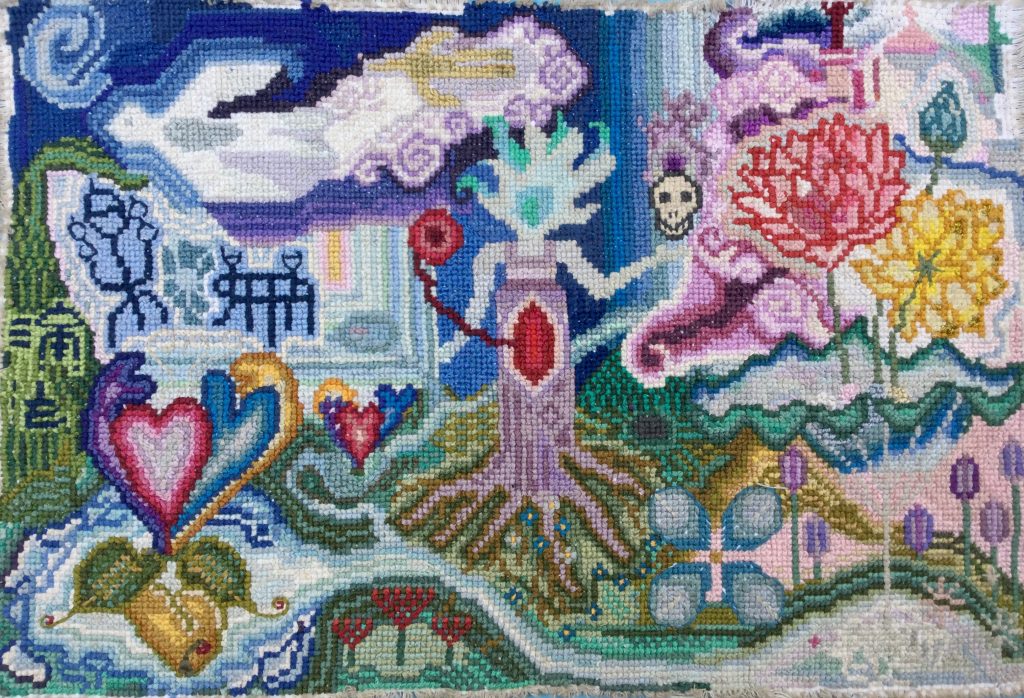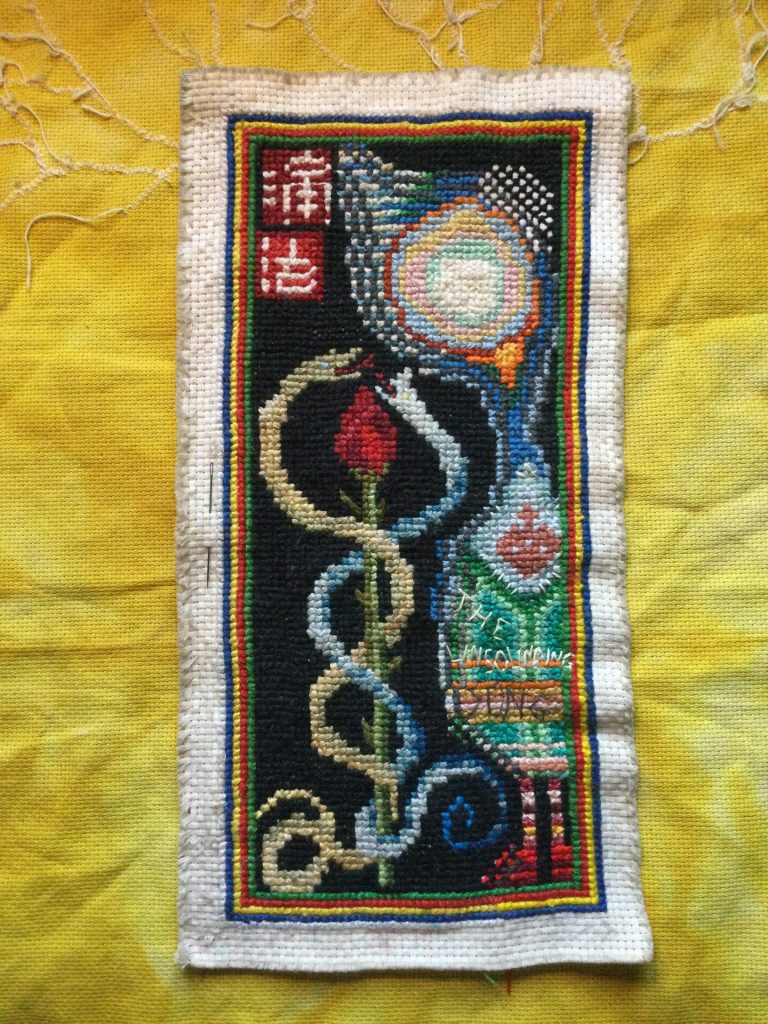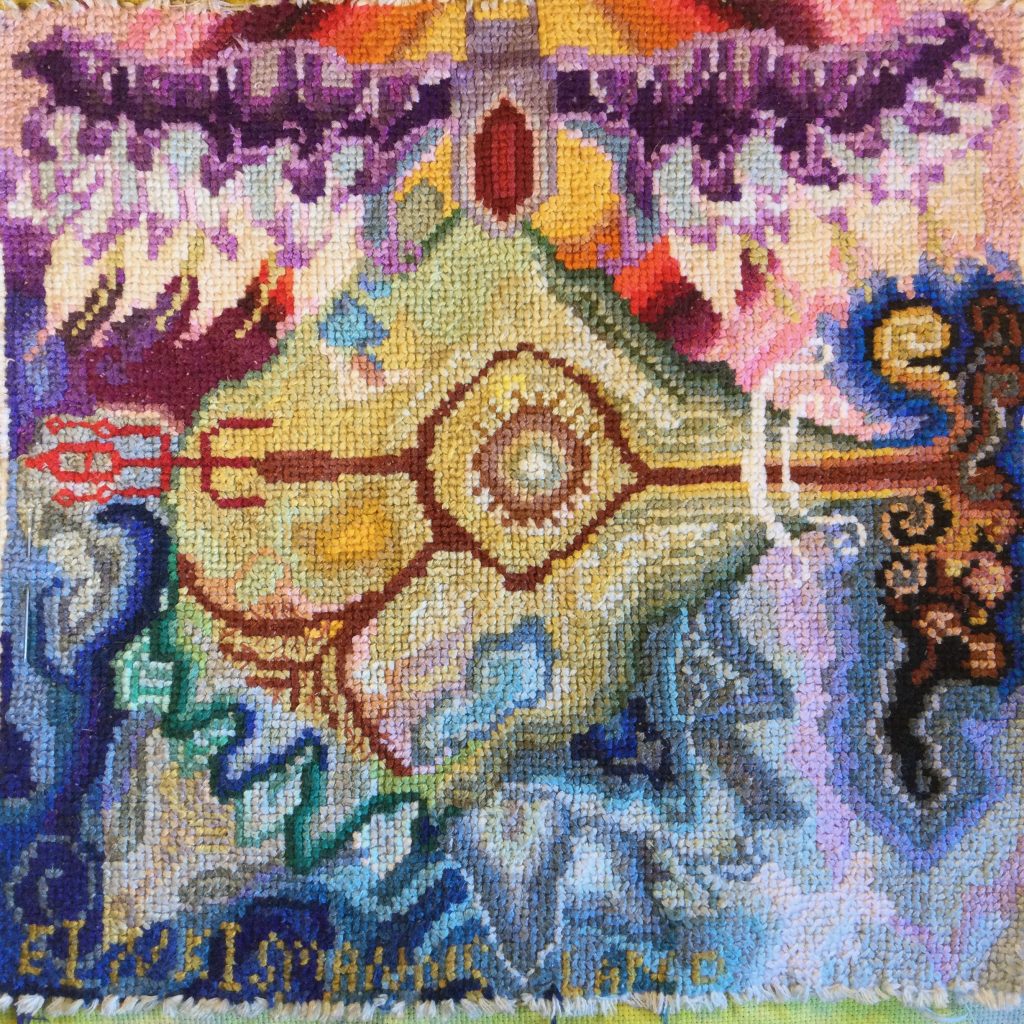The oneiric earth is an exploration of the poetic otherworld as an oneiric dream space with which one merges and is transformed, as well as archetypal subconscious symbols and creatures who may reside there.
The ideas were developed during my research thesis ‘Joining with the oneiric earth: An exploration of the telluric stages of Michel Tournier’s Friday, or the Other Island‘. They have since developed visually through the medium of cross-stitch tapestry.

In medieval otherworld accounts, characters often must move from the primary world of the narrative into a secondary otherworld by encountering and then moving through elemental boundaries, like bodies of water, forests, areas of dense fog, holes in the earth, or snow storms.
The otherworld is a mysterious zone, a land of the wild and the hidden and that which cannot be understood. It is a land that cannot always be penetrated, that can choose either to reject you or to allow you in, or even to disappear and reappear at will.
This tapestry is the first in a series exploring the literary otherworld as an oneiric dream space with which one merges and is transformed. It is inspired by the Tibetan thangka, which places the bodhisattva at the centre of the image, surrounded by colourful and rich depictions of nature.
My research into otherworld spaces began with reading medieval otherworld accounts, and this work in particular makes reference to those stories, and also to inaccurate yet intricate maps created by medieval artists.
In this tapestry, space is expressed from above, rather than at eye level. The concept was to make a map that can be viewed from any angle to appear upright.
The title, Einkismannsland, means No Man’s Land in Icelandic, and comes from an exhibition I saw at @reykjavikartmuseum Hafnarhús in 2018, of artists responding to the Icelandic highlands. My tapestry is also inspired by the highlands; the mountainous, volcanic, glacial landscape in the centre of Iceland, where I witnessed wild and colourful expressions of nature.

The unsounding song is a feeling in the stomach, hence I have located it in the stomach of the image. On one hand it is a kind of nausea: the haunting pain of inexpression, of not finding the right words, of not being heard, of a narrative preemptively written. This feeling is communicated by the stark lettering against bright colour.
On the other hand the unsounding song is divine, being the fertile first echo or instinctual movement, felt deep within. It is the egg inside the womb, the glimmer of what is to come. Because it is the source of potential it is limitless, it references all possibilities.
The idea of the Unsounding Song is a two sided coin. In both its positive and negative expression, it always points to the unbearable lightness of potentiality, both of what could have been, and of what is to come.
